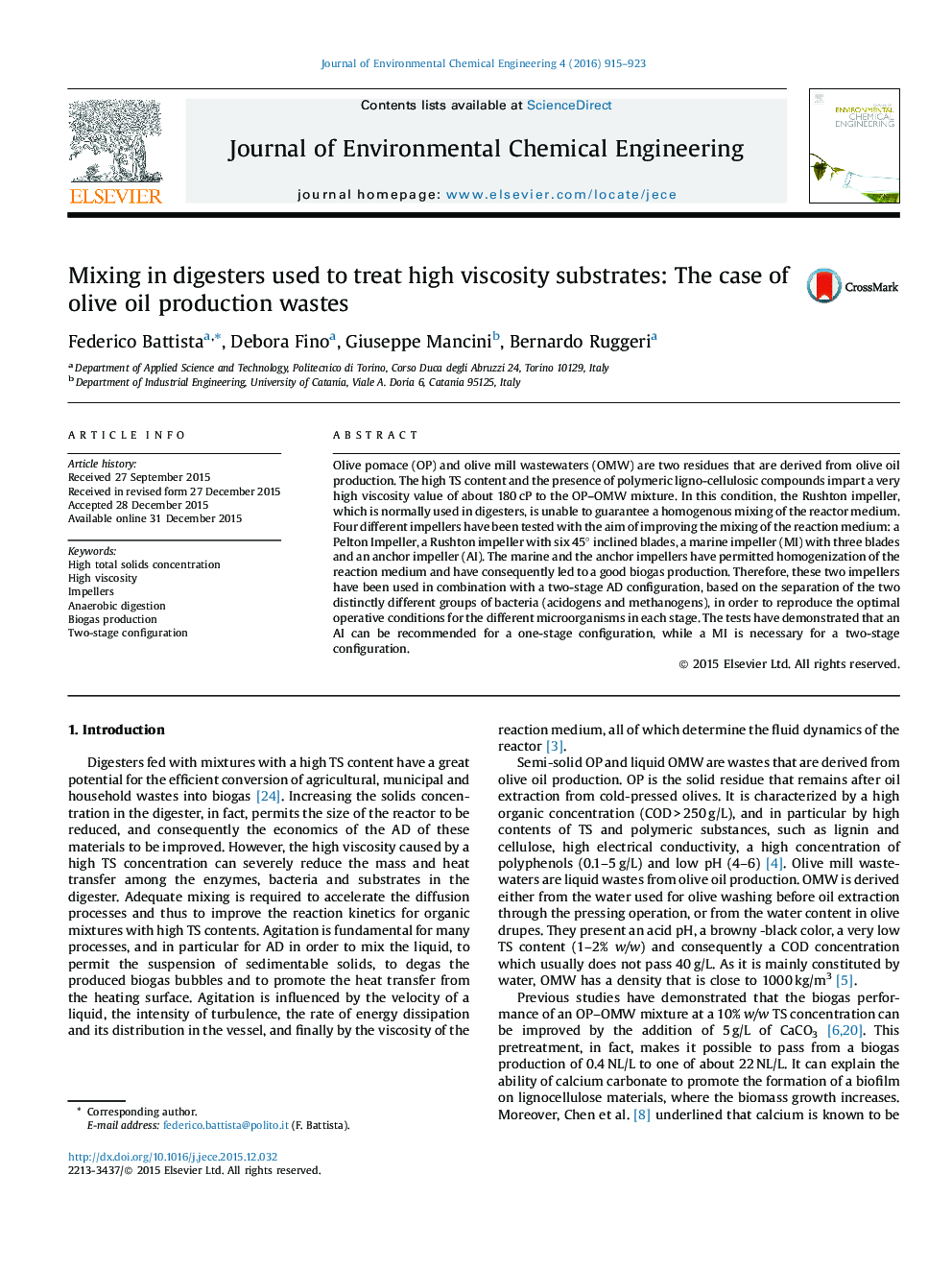| Article ID | Journal | Published Year | Pages | File Type |
|---|---|---|---|---|
| 221943 | Journal of Environmental Chemical Engineering | 2016 | 9 Pages |
•OP–OMW mixture is characterized by high viscosity which inhibits anaerobic digestion.•Rusthon turbine resulted inadequate for the mixing of high viscosity mixture.•Different impellers were tested to improve the mixing of the reaction medium.•The anchor impeller optimize the anaerobic digestion conducted in one stage configuration.•The marine impeller optimize the process when conducted in two stages.
Olive pomace (OP) and olive mill wastewaters (OMW) are two residues that are derived from olive oil production. The high TS content and the presence of polymeric ligno-cellulosic compounds impart a very high viscosity value of about 180 cP to the OP–OMW mixture. In this condition, the Rushton impeller, which is normally used in digesters, is unable to guarantee a homogenous mixing of the reactor medium. Four different impellers have been tested with the aim of improving the mixing of the reaction medium: a Pelton Impeller, a Rushton impeller with six 45° inclined blades, a marine impeller (MI) with three blades and an anchor impeller (AI). The marine and the anchor impellers have permitted homogenization of the reaction medium and have consequently led to a good biogas production. Therefore, these two impellers have been used in combination with a two-stage AD configuration, based on the separation of the two distinctly different groups of bacteria (acidogens and methanogens), in order to reproduce the optimal operative conditions for the different microorganisms in each stage. The tests have demonstrated that an AI can be recommended for a one-stage configuration, while a MI is necessary for a two-stage configuration.
